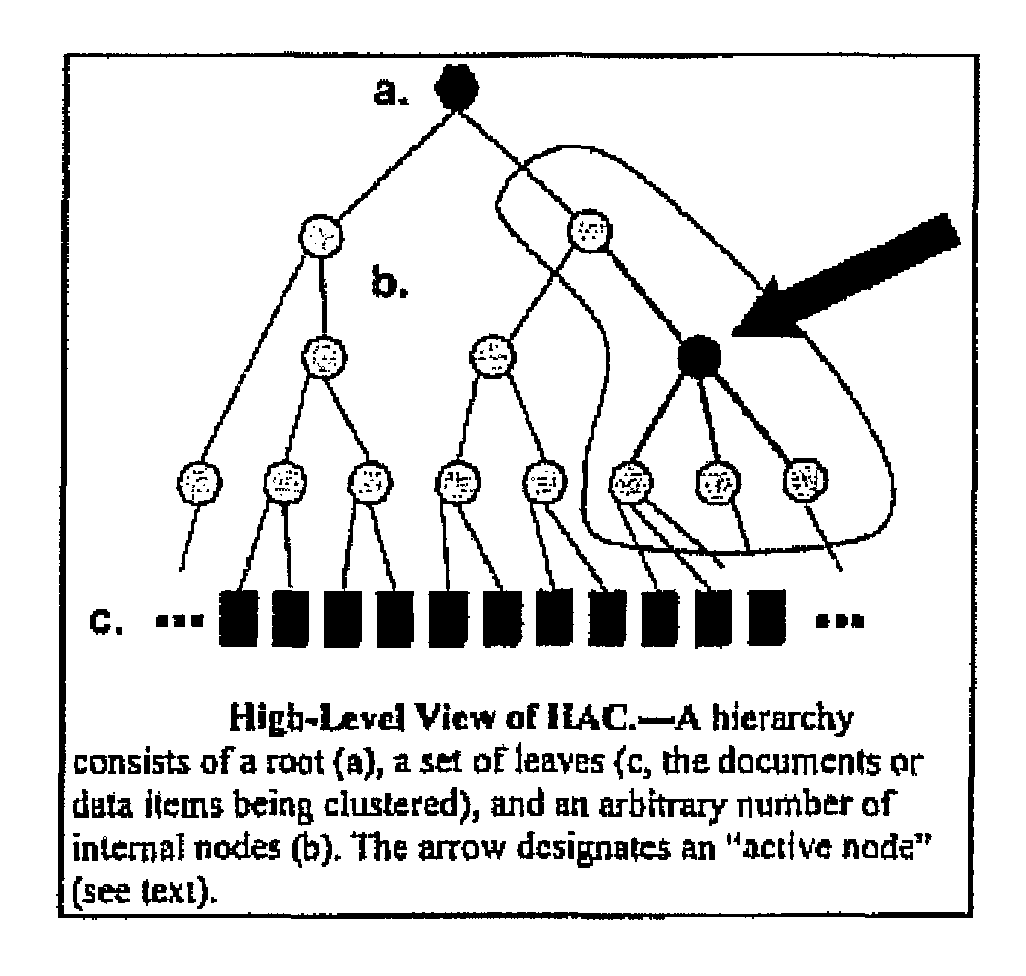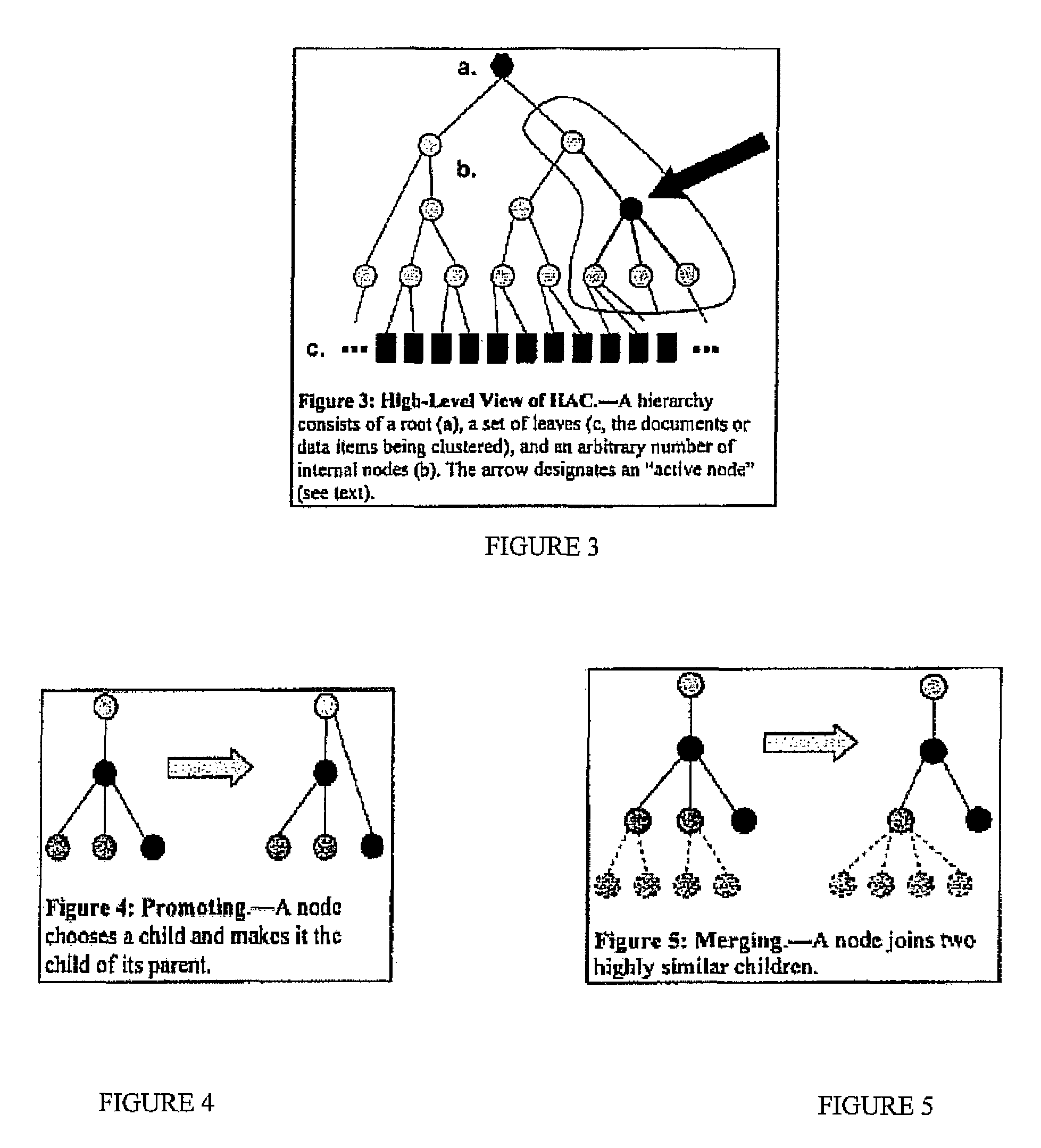Hierarchical ant clustering and foraging
a clustering algorithm and hierarchy technology, applied in the field of clustering algorithms, can solve the problems of ant hill executing a sorting algorithm, the need for a static set of data, and the batch orientation of conventional algorithms,
- Summary
- Abstract
- Description
- Claims
- Application Information
AI Technical Summary
Benefits of technology
Problems solved by technology
Method used
Image
Examples
Embodiment Construction
[0045]This section outlines the hierarchical ant clustering (HAC) algorithm, describes an ant-based searching algorithm that can run concurrently with the clustering process, and discusses the performance of the system.
[0046]We introduce the algorithm at an abstract level, then describe its components, and finally discuss alternative detailed implementations.
Abstract View
[0047]To frame the discussion, we first consider the nature of the data structure we want to achieve, and then propose some simple operations that can construct and maintain it.
Objective: A Well-Formed Hierarchy
[0048]FIG. 3 is a schematic of a hierarchy. All data lives in the leaves. We constrain neither depth of the hierarchy, nor the branching factor of individual nodes. The set of all nodes N=R∪L∪I has three subclasses:[0049]1. The set of root nodes R has one member, the root, which is an ancestor of all the other nodes, and has no distinct parent. (For simplicity in describing the algorithm, it is conve...
PUM
 Login to View More
Login to View More Abstract
Description
Claims
Application Information
 Login to View More
Login to View More - R&D
- Intellectual Property
- Life Sciences
- Materials
- Tech Scout
- Unparalleled Data Quality
- Higher Quality Content
- 60% Fewer Hallucinations
Browse by: Latest US Patents, China's latest patents, Technical Efficacy Thesaurus, Application Domain, Technology Topic, Popular Technical Reports.
© 2025 PatSnap. All rights reserved.Legal|Privacy policy|Modern Slavery Act Transparency Statement|Sitemap|About US| Contact US: help@patsnap.com



